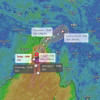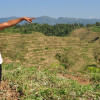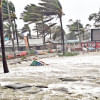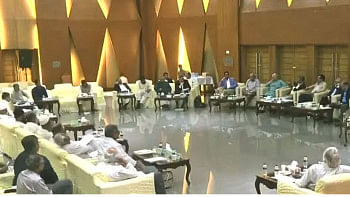The untold agony of Cyclone Remal

Can you imagine living under the open sky, bereft of shelter, having lost your home to the sudden and merciless onslaught of a cyclone? For those who have not experienced such devastation, it is difficult to imagine such a dire situation. Government assessments to date indicate that at least 150,000 homes have been destroyed or damaged across 19 districts, affecting an estimated 639,000 people, of whom about 274,000 are children. Despite technological advancements that allow us to monitor a cyclone's trajectory, including its source, wind speed, estimated landfall time, and lead time, structural mitigation measures have not kept pace, as evidenced by Cyclone Remal.
The floodwaters left half a million people stranded. Significant damage was inflicted on agricultural land, shrimp and fish enclosures were swept away, road connections were severed in some locations, and salty water seeped in, depleting freshwater supplies. Many survivors are now compelled to live in cramped, filthy, temporary shelters or improvised housing. Some people may even find it difficult to rebuild their homes and lives while being displaced for prolonged periods.
While the cyclone tore through the nation's coastal regions, at least 26 people in Khulna, Satkhira, Barishal, Patuakhali, Bhola, and Chattogram lost their lives, mostly from collapsing walls and falling trees. The tidal surge triggered by the cyclone flooded many areas, leaving settlements underwater as embankments broke. The people whose houses were destroyed by the storm mostly took refuge with neighbours or relatives. Though awareness campaigns and preparations for the disasters led to at least 800,000 people being moved to cyclone shelters, significantly decreasing the death toll, the loss of lives during Cyclone Remal raises questions.
As you may recall, a young man wrote the words "We want dam, not relief" on his chest in a photo that went viral on social media right after the cyclone. This image effectively illustrates the precarious nature of reconstruction and rehabilitation efforts. In addition to disaster preparedness, dams and levees require prompt maintenance and reinforcement. Significant infrastructure vulnerabilities were revealed by the recent cyclone. Many houses in the coastal region are not constructed to withstand strong winds and torrential rain, resulting in extensive damage and the eviction of residents. Disaster management professionals have long emphasised the need for constructing stronger, more climate-resilient homes for vulnerable populations in these areas.
Widespread and protracted power outages resulted from substation damage and power line damage triggered by cyclone winds and flooding. Emergency response operations were hampered by damage to communication towers and networks, leaving isolated communities unable to request support. In at least 45 districts, the cyclone prompted blackouts and hindered telecommunication services. The initial statement from the Bangladesh Telecommunication Regulatory Commission (BTRC) stated that 22,218—or 48 percent—of the 45,601 towers had been out of order. Another report indicated that the cyclone left 1.73 crore people without electricity.
Every cyclone invariably causes a great deal of suffering. Even though the death toll is frequently highlighted in post-cyclone assessments, the impact of disasters cannot be fully appreciated based solely on this statistic. Beyond fatalities, a large number of people suffer injuries that may necessitate ongoing medical care and rehabilitation. Survivors may experience trauma, anxiety, and depression, and they may lose their homes, livelihoods, and loved ones—all of which are often disregarded in the aftermath.
The disruption in daily life extends to various facets of existence. The closure of schools, destroyed and damaged, impedes children's education, potentially causing long-term detriments to their development. Economic activities are halted as businesses face destruction and farmers lose their crops and livestock, leading to financial instability and poverty. The environmental impact is also significant, with the destruction of natural habitats and contamination of water sources posing additional long-term challenges.
Structural measures, such as repairing and reinforcing dams and levees, are critical to mitigate the impact of cyclones as they play a vital role in controlling floodwaters and protecting communities from inundation. Addressing the broader implications of cyclones also requires a holistic approach that includes psychological support for survivors, restoration of livelihoods, and rebuilding of community networks. Efforts should also focus on improving housing standards and developing sustainable agricultural practices to enhance resilience against future storms.
We need to ensure that impacted communities receive food, clean water, medical attention, and temporary housing as soon as possible. At the same time, start repairing and fortifying vital infrastructure, such as levees, roads, electricity lines, dams, and dwellings, using designs that are climate-resilient. The government, other national and international organisations should come together providing financial support, reestablishing livelihoods, and resurrecting local businesses to aid in the economic recovery. We have no chance of easing the suffering that results from natural disasters unless we make all-encompassing and persistent efforts.
Monira Sharminis a columnist and an independent researcher. She can be reached at [email protected].
Views expressed in this article are the author's own.
Follow The Daily Star Opinion on Facebook for the latest opinions, commentaries and analyses by experts and professionals. To contribute your article or letter to The Daily Star Opinion, see our guidelines for submission.

 For all latest news, follow The Daily Star's Google News channel.
For all latest news, follow The Daily Star's Google News channel. 










Comments